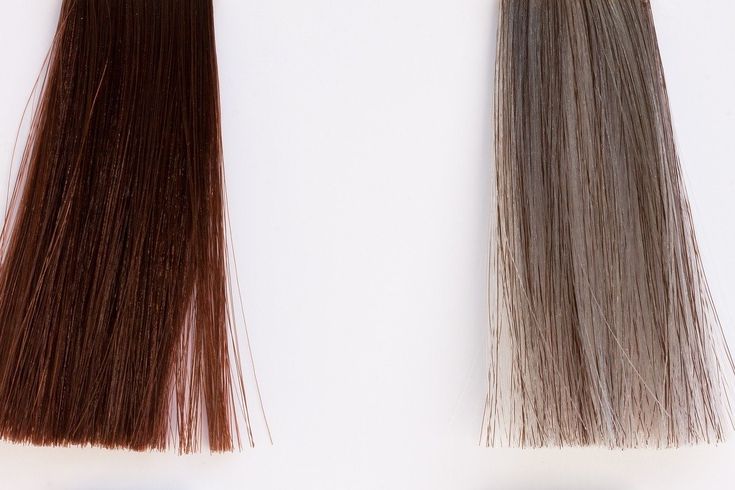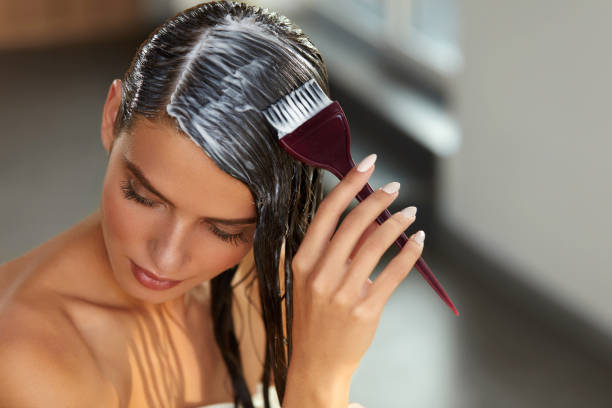If you’re looking for a change in your hair color, you might want to start by stripping it off first. Stripping the hair color is a process that involves removing the current pigments from your hair. This can be done if you’ve got a previous dye job that turned out differently or if you just want to start anew.
So, scroll down and check out how to strip hair color effectively and safely. Keep reading!
Hair Type Considerations when stripping color
When removing hair color, it’s crucial to take your hair type into account as different hair types react uniquely to stripping products and processes. Fine hair, being more vulnerable to damage and breakage, requires a gentle stripper and caution against over-processing. Following up with a deep conditioner can help restore moisture and strength. Thick hair, on the other hand, is resilient but might necessitate a stronger stripper or a longer processing time. However, over-processing should be avoided to prevent damage and dryness. Curly hair, often more porous, can absorb stripping products readily, making even color removal a challenge; hence, a gentle stripper is essential, and a patch test is advisable. Color-treated hair is inherently delicate, so professional assistance is wise to prevent damage.
If you are unsure about how to strip your hair color safely, it is always best to consult with a professional stylist.
Products for stripping hair color at home
Color Remover Kits
Color remover kits are specially formulated products designed to remove or lighten hair color. They are available in various brands and can be found in most drugstores or beauty supply stores. These kits typically consist of a color remover, developer, and sometimes a conditioning treatment. Brands like Color Oops, L’Oreal ColorZap, and One ‘n Only Colorfix offer such kits.
Clarifying Shampoo
While not as effective as dedicated color removers, clarifying shampoos can help fade semi-permanent hair color gradually over several washes. When you apply a clarifying shampoo to your hair, it can also help to strip away some of the surface color molecules from the hair shaft. This action is more effective for semi-permanent or temporary hair dyes that sit on the hair’s surface. To diminish your hair color, avoid clarifying shampoos labeled as “color-safe.”
Vitamin C (Ascorbic Acid)
Vitamin C is an antioxidant, and it has the ability to break down the oxidative hair dye molecules. When vitamin C is mixed into a paste and applied to the hair, it starts to reduce the dye molecules, causing the color to fade. This effect is more pronounced with semi-permanent or direct dyes that are deposited on the hair shaft.
Baking Soda (Sodium Bicarbonate)
Baking soda is abrasive in nature and can physically scrub away color molecules from the surface of the hair shaft. It can also affect the pH level of the hair, making it slightly more alkaline. Hair dye molecules often require an acidic environment to remain stable. By increasing the pH level, baking soda can weaken the bond between the dye molecules and the hair.
White Vinegar
White vinegar is an acid, typically containing acetic acid. When applied to the hair, its acidic nature can help break down the color molecules in hair dye, causing them to loosen and fade. While white vinegar alone may not completely strip all hair color, it can help fade or remove some of the color, particularly if you’ve recently dyed your hair or if you have semi-permanent hair color
How to Strip Hair Color Effectively
Step 1: Determine Your Hair’s Condition
Before starting the stripping process, you need to determine your hair’s condition. If it’s weak, damaged, or brittle because of previous chemical treatments, it may not be suitable for hair stripping. It’s best to consult with a professional stylist to assess your hair’s health before proceeding.
Step 2: Choose the Right Product
There are several products available that can help strip off hair color as we mention above. Some of them are more effective than others, so it’s essential to choose the right one. Most hair color removers are made of chemicals, so make sure to read the product’s label and instructions carefully before using it.
Step 3: Prepare for the Process
Prepare for the hair stripping process by wearing gloves and old clothes. Chemicals used in hair color removers can be harsh and irritating to the skin, so it’s crucial to protect yourself while applying the product. You may also want to cover your work area with old towels or newspapers to avoid staining.
Step 4: Apply the Product
Apply the product according to the instructions on the package. Depending on the product you use, the waiting time can vary from 20 minutes to an hour. Make sure to follow the guidelines to ensure the product’s effectiveness and minimize damage to your hair.
Step 5: Rinse Thoroughly
After the recommended waiting time, rinse your hair thoroughly with warm water. Use a clarifying shampoo to help remove any remaining product from your hair. Make sure to rinse your hair completely to avoid any chemical buildup.
Step 6: Condition Your Hair
Hair stripping can leave your hair dry and damaged, so it’s essential to condition your hair after the process. It helps restore moisture and prevent breakage. You may also want to use a deep conditioning treatment or hair mask to provide extra nourishment to your strands.
Stripping vs. bleaching
Stripping and bleaching are two distinct methods for lightening or removing hair color. Hair stripping involves using a chemical product that breaks down the color molecules in the hair, making it fade or lighten. It’s generally less damaging than bleach and is often used for removing temporary or semi-permanent hair color. On the other hand, bleaching is a more aggressive method that uses hydrogen peroxide to lift and remove color from the hair shaft. While it can be highly effective for lightening hair, it can also cause significant damage, particularly if overused or applied incorrectly. The choice between stripping and bleaching depends on factors such as the desired result, the current hair color, and the condition of the hair, with stripping being a milder option for color removal.
tips for stripping hair color
Stripping off hair color may seem like a straightforward process, but it can cause damage if not done correctly. It’s best to seek professional help from a reputable salon or stylist who can assess your hair’s condition and recommend the appropriate product and procedure.
If you decide to do it yourself, make sure to read the product instructions carefully and follow them strictly. Before proceeding with the entire process, conduct a strand test on a small hair section to ensure the stripper is effective and doesn’t cause any adverse reactions. Furthermore, remember to provide your hair with deep conditioning post-stripping to counteract potential dryness and damage, restoring moisture and strength. Wear protective gloves and clothing and avoid leaving the product on your hair for longer than recommended.
FAQ
- Can you strip permanent hair dye? Yes, permanent hair dye can be stripped with a hair color remover. Keep in mind that the process can be damaging to the hair, so it’s crucial to take extra care of your strands after the procedure.
- How long should you wait before coloring your hair after stripping the previous color? It’s recommended to wait for at least two weeks before applying any new hair color after stripping the previous one. This allows your hair time to recover and prevents further damage.
- Can you use hair color remover on freshly dyed hair? It’s best to wait for at least a week before using a hair color remover on freshly dyed hair. This gives the pigments time to settle and ensures that the stripping process is more effective.
- Can you strip hair color from bleached hair? Yes, you can strip hair color from bleached hair using a hair color remover. However, bleached hair is already damaged and may become even more fragile after the stripping process. Make sure to condition your hair properly after the procedure.
Final Takeaway
Stripping off hair color may seem like a daunting task, but it can be achieved successfully with the right product and procedure. It’s essential to remember that the process can be damaging to the hair, so it’s crucial to take extra care of your strands before and after the stripping process.
Consulting with a professional stylist is always recommended, but if you decide to do it yourself, make sure to read the product instructions carefully and follow them strictly. With proper care and attention, you can achieve the hair color you desire.




